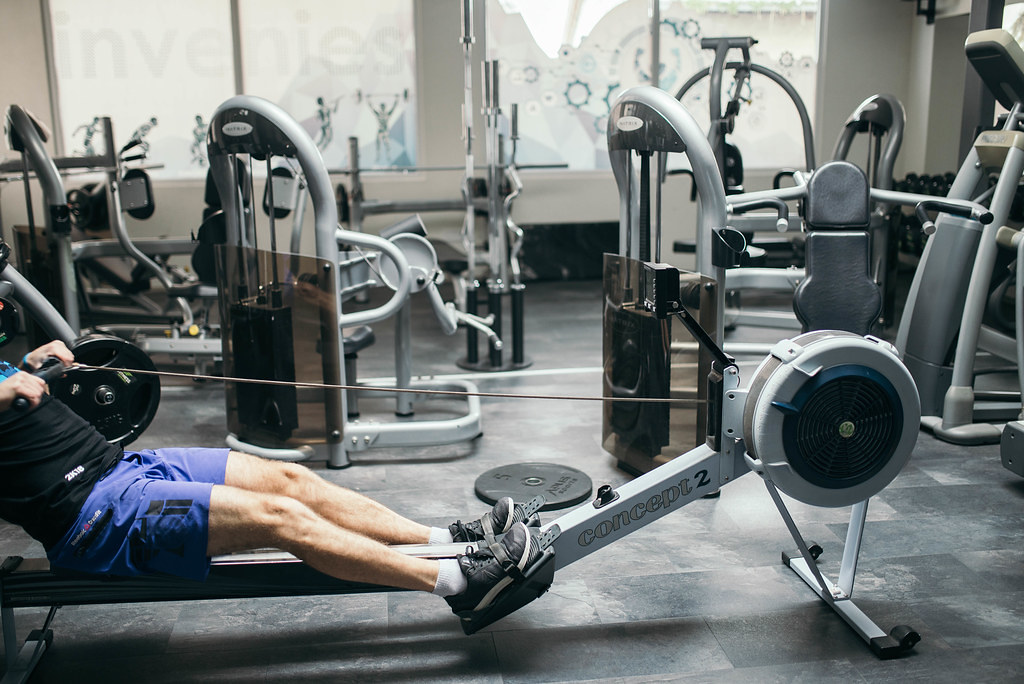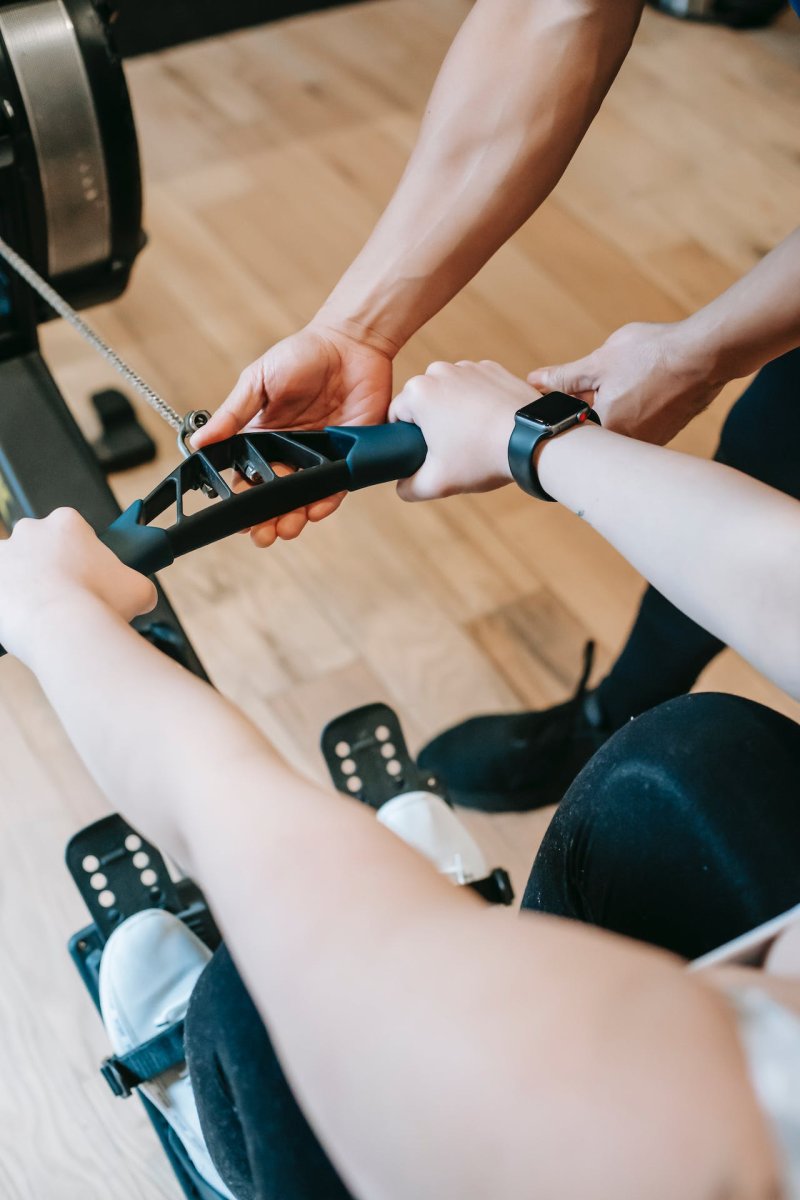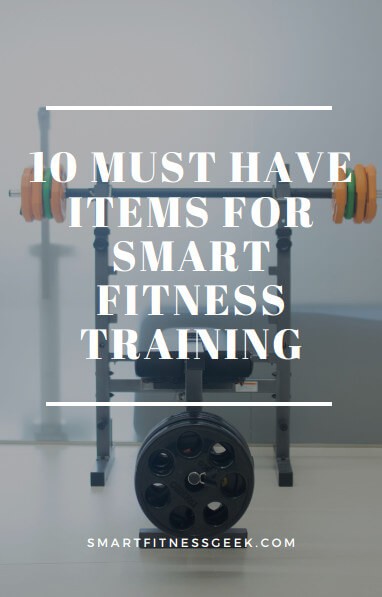Rowing machines are popular in gyms and homes because they give you a workout that uses your whole body. They’re good for anyone who wants to get better at heart health, grow muscles, and use up energy. When you use a rowing machine, you’re copying what it’s like to row a boat, which means you work out your legs, back, arms, and middle section all at once.
Rowing right means a lot for your strength and safety. When you row, stretch out your arms and legs all the way every time you push away and pull towards you. Keep your back straight, not curved, to avoid any harm. This straight posture and full movement help you use all your muscle power and make each row count.
To push your rowing skills, play with the speed. Start by rowing fast and giving it your all, then take it down a notch and row slowly or rest. This switch between speed and rest boosts both your muscle strength and how long you can keep up the hard work. Also, lifting weights when you’re not rowing. This builds up your muscles, making you stronger for your next rowing session, and allowing you to put more into it and get more out of it.

Table of Contents
What is a Rowing Machine
A rowing machine mimics the movements of rowing a real boat and is a good workout for keeping the heart healthy, growing muscles, and helping with weight loss. It has a seat for you to sit on, a place to rest your feet, a handle to pull, and a spinning wheel that adds resistance.
When you use it, you sit down, put your feet on the pads, grab the handle, and pull it to your chest while pushing your feet against the pads. This whole move is like the strokes you make while rowing a boat on water.
There are different kinds of rowing machines you can buy. Some have a fan that creates wind resistance when you pull, making it harder the faster you row. Others use water for resistance. These machines have a tank of water, and when you pull the handle, it moves paddles through the water, making it feel like you’re rowing a boat. The water kind gives a more true-to-life rowing feel than the ones with fans.
How to Use a Rowing Machine
Warm-up
Getting your muscles ready before you start rowing helps keep injuries away. Begin with easy activities to get your blood flowing and muscles loose. You might jog without moving from your spot or do jumping jacks for a short time. It’s just like getting ready for any big activity; you want to prep your body to move better and more safely. Think of it as telling your muscles, “Hey, we’re about to get moving, so let’s wake up!”
Adjust the seat
Positioning the seat right is key to a good row. Your legs need to be able to stretch out but still have a slight bend when you’re pulled in and ready to start. If your heels sit flat and snug on the footpads, you’re set. It’s like sitting in a car; you adjust the seat to reach the pedals comfortably before you drive.
Grip the handle
Your grip on the handle matters a lot. Hold it firmly with your hands apart, just as wide as your shoulders. Think about holding a large shopping bag; that’s how your grip should feel, solid and strong, with your palms facing out.
Catch position
To start right, with legs stretched out and flat heels, lean forward a bit. This is your power pose to kick off the stroke. Make sure your belly muscles are tight and ready to help.
Drive
Pushing with your legs, keep those heels down. As your legs open up all the way, your body will lean back. It’s like pushing off on a skateboard. Use that push to start the movement.
Finish
At the tail end of your row, bring the handle to your chest. Keep your back as straight as a ruler and use your belly muscles to stay solid.
Recovery
Now, go back to where you started. Just reverse what you did to push and pull. It’s as if you’re setting up again to take another leap.
Cool-down
Don’t just stop and walk away when you’re done. Spend time stretching out. It helps your body wind down. Like after a big run, you walk a bit to catch your breath and let your muscles relax.
How to Boost Your Rowing Power If You’re Just Starting Out
When you’re new to rowing, the main thing is to nail the right way to do it. That means ensuring you stretch and pull through the full motion, keeping your back straight, not slouched, and making sure your muscles are actively involved. This sets the stage for strong, safe rows that make the most of your efforts.
Adding variety to your routine with interval training can also ramp up your strength and stamina. It’s like running fast and slow in shifts during a workout. Push hard on the rower, then ease off or pause. Starting with light intervals teaches your body to handle more work and recover from it, which builds up power for longer, more intense sessions.
As you keep at it, mix in some weight training. Picking up weights or doing bodyweight exercises beefs up the muscle power you bring to your rowing sessions. Stronger muscles can make every stroke on the rower pack more punch, and as you grow stronger, your rowing will too.
Intermediate Level
After you’ve got the basics down, the next step is to polish up your rowing moves. Tweak how you hold the handle or change your seating angle to find what gives you the best push. Think of it as fine-tuning a car; small adjustments can make your rowing smoother and stronger.
You’ll want to turn up the heat on your interval workouts too. By stepping up the pace during your fast rowing times and cutting back on break times, you challenge your body and build endurance. Just like sprinters on the track, pushing your limits in controlled bursts can lead to big gains in speed and power.
Stepping up your resistance training is another way to level up. That might mean going for more weight or tougher moves. If rowing gets your muscles working, resistance training is like the work behind the scenes that makes those muscles ready for action.
Advanced Strategies for Peak Rowing Performance
For those at the top of their game, fine-tuning stroke timing can be a game-changer. Syncing up the drive of your legs with the pull of your arms and the shift of your body is the secret to squeezing out that extra bit of power. It’s like a dance where every step is timed to the beat for the best performance.
Plyometric training is about making your muscles explosive, like a basketball player leaping for a dunk. This kind of exercise can make a big difference in how quickly you can translate strength into speed on the rowing machine.
Lastly, a coach’s eagle eye can catch what you might miss. They can fine-tune your rowing form to push past plateaus. Like a skilled mechanic tuning a race car, a coach tweaks your rowing technique, so you hit your best marks every time you row.
1. How often should I train on a rowing machine to see an increase in power?
To build power, consistency is key. Aim for rowing workouts 3-4 times a week. This allows enough frequency for improvement while also giving your body time to recover. As you progress, the intensity and length of your workouts can be adjusted to keep challenging your strength and endurance.
2. What kind of warm-up should I do before rowing?
Before you start rowing, it’s good to spend 5-10 minutes on a warm-up to get your muscles ready and to prevent injuries. You can start with activities like walking, light jogging, or dynamic stretches that mimic the rowing motion. This prepares your body for the exercise ahead and can help improve your overall performance.
3. How can I avoid common rowing injuries?
The best way to avoid injuries is to focus on proper form. Make sure you’re not overextending your back or locking your knees. Also, build up intensity gradually, give your body time to adapt to new levels of training, and listen to your body to avoid overtraining. Using a machine that’s set up to suit your body size and strength is also crucial.
4. Are there specific exercises I can do off the rowing machine to help with power output?
Yes, off-machine exercises like squats, deadlifts, and plyometric workouts can greatly benefit your rowing power. These exercises build the leg, core, and arm strength necessary for a powerful stroke. Incorporating these into your training routine can translate to better performance on the rower.







